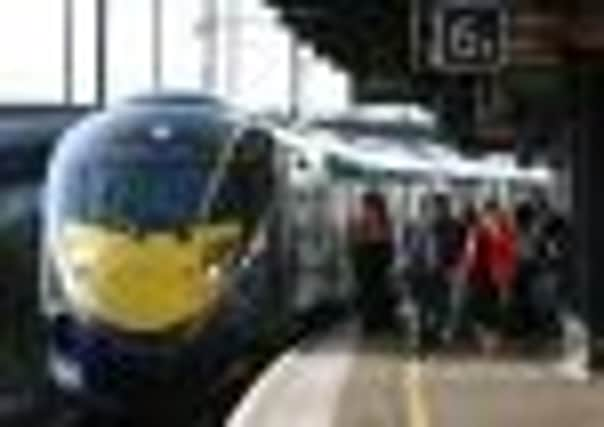£25bn in benefits from high-speed trains to Scotland, businesses claim


The benefits – mostly arising from reduced journey time – of bringing the line north would be £10bn greater than the current plans for a new line between London and Birmingham.
The overwhelming majority of business travellers would also consider a switch from air to rail if the line was up and running, according to the official business case for the Scottish leg, which is being unveiled this morning.
Advertisement
Hide AdAdvertisement
Hide AdThe Scottish Government last week announced its decision in principal to participate in the project, with £9bn being set aside for the scheme.
Transport minister Keith Brown will today launch the business case, Fast Track Scotland, which has been compiled by the Scottish Partnership Group for High Speed Rail.
The user benefits of £24.8bn are mainly journey time savings over a 60-year appraisal period. This compares with benefits of £14.6bn between London and the West Midlands.
“This suggests that the user benefits arising from the Manchester to Scotland section are £10bn higher than that of the London to West Midlands section,” the report states.
The document backs the creation of a single, twin-track line serving both Edinburgh and Glasgow. The partnership group report says that by the early 2030s, journey times between Manchester and London would be cut further by the completion of a full high-speed line between those cities, with no improvement from Lancashire to Scotland.
“Although there will be a marginal benefit to Scotland through faster journey times between London and Manchester, the Scottish economy will be at a comparative disadvantage compared with the Midlands and north of England,” the business case states.
“Only a full network with a link with Scotland will deliver the significant benefits identified elsewhere in this document.”
It calls for the design of a new line and stations in Scotland to be “future proofed”, with the potential for later expansion incorporated into the design.
Advertisement
Hide AdAdvertisement
Hide AdA business survey found that 57.7 per cent of business travellers currently journey by plane, while only a quarter go by rail. But 82.5 per cent said they would be prepared to shift if journey times improved.
Liz Cameron, Scottish Chambers of Commerce chief executive, said: “Fast Track Scotland sets out in clear and unambiguous terms the economic windfall that the development of high-speed rail could bring to Scotland.
“As the UK moves towards a rapid, resilient and sustainable rail network for the 21st century, it is vital that Scotland is included from the outset.
“Last week, the Scottish Government set out a route map which offered a realistic assessment of how and when it can be delivered.”
The 100-mile rail link between London and Birmingham would be built between 2016 and 2026 and aims to cut journey times to 49 minutes.
UK transport secretary Justine Greening had been expected to decide on whether to approve the £32bn scheme before Westminster rises for its Christmas break on 20 December. But the decision has been delayed until mid-January, as Ms Greening has asked for more information on whether extra funding – estimated at around £500 million – could be used to pay for a tunnel under the Chiltern Hills.
Labour has set out plans for an alternative HS2 route between London and Birmingham, which takes in Heathrow Airport.
The delay will allow a feasibility study to be carried out, as well as a study of the environmental impact of the proposed route. It follows widespread objections about the effect on the English countryside and concerns about the Scottish leg are already emerging.
Advertisement
Hide AdAdvertisement
Hide AdEmma Crane, of the Scottish Campaign for HS2 Action Alliance, said “High-speed rail will only benefit 8 per cent of Scottish rail users.
“At a cost of £130m per mile of track, it is the wrong priority for Scotland. Focusing funds on improving existing rail networks would deliver far greater benefits at a fraction of the cost.”